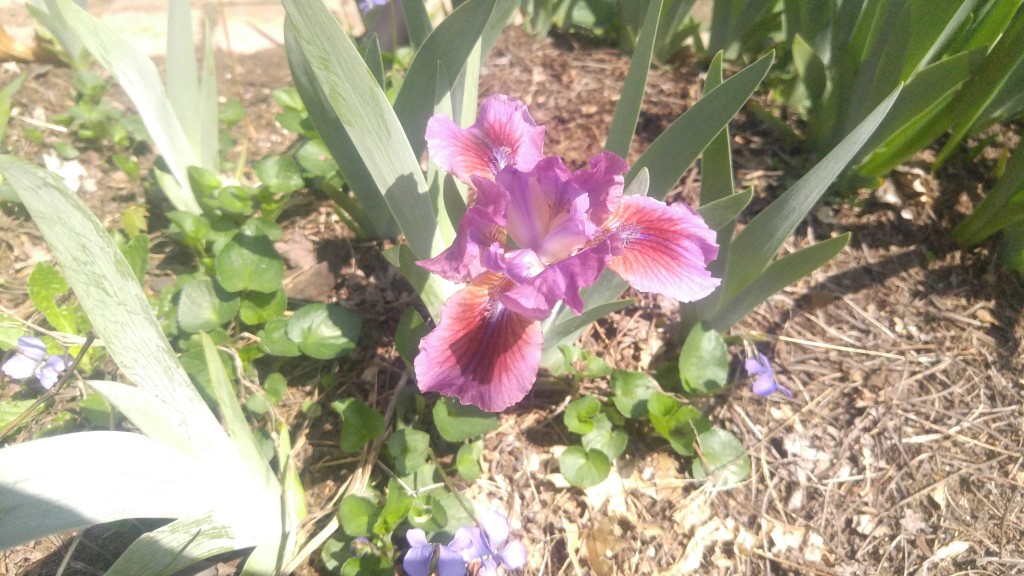Our Pumila iris, also called dwarf iris, has been putting on a colorful show for several days now. Each spring we look forward to them coming into bloom just as the daffodils are fading, weeks before other irises even think about blooming
We have a hot, dry, sandy area right along our walkway that closely mimics their original habitat in eastern Europe. Our soil is fairly acidic with a pH right around 5.4. Dwarf iris prefers the soil to be slightly acidic, 5.5 to 6.5. That may explain why ours wants to grow toward the sidewalk and not in the other direction. The sidewalk is slowly leeching calcium from the concrete slightly raising the pH in the process. It’s fascinating to watch how a plant like this reacts to its surroundings. They’re slowly but surly expanding their cluster.
Pumila iris come in a wide variety of color due to a a lot of cross breeding done by horticulturists, those are not the true wild species types. On the other hand, even wild species populations exhibit a wide variety of color depending on local growing conditions.
The Pumlia we have are probably a wild species type — I say that because of their unique history. There’s a population of dwarf iris that has been growing at Matthaei Botanical Gardens perennial garden for at least thirty years. Several years ago the irises needed to be divided and renewed. Ours were rhizomes from that project that were rescued before going the compost.
If you have a “problem area” with the right growing conditions, you might want to try planting some dwarf iris. They’re available at plant nurseries and garden centers.
Bob
